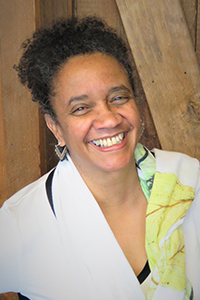This is a guest post by Sheila Savannah, who is presenting at the Hogg Foundation’s 2019 Robert Lee Sutherland Seminar: Working Together for Rural Well-Being. Read other posts in this series from Wendy Ellis, Frances Dunn Butterfoss, Oscar Benavides, and Nakia Winfield and Anna Jackson.
He drew a circle that shut me out —
Heretic, rebel, a thing to flout.
But Love and I had the wit to win:
We drew a circle that took him in!
— Outwitted, by Edwin Markham

Sheila Savannah, Managing Director, Prevention Institute
Historical and current-day policies, laws, practices and beliefs that shape our environments are producing poor health and safety outcomes—and our communities are suffering as a result. These policies and practices—such as public transportation availability, school programming, and where businesses invest—have resulted in too many people being segregated from the opportunity to be healthy.
Over time, these conditions have shaped the norms and values within the institutions that serve communities—too often embedding bias and discrimination which accelerate poor health outcomes. Structural biases working against people living with low incomes and people of color underpin the realities of daily life and have fostered disparities in health across socioeconomic, racial, ethnic and geographic lines.
Rural Communities Fare Worse
In rural communities, such practices have led to disinvestment and declining economic vitality. Examples include trade policies that resulted in many U.S. manufacturing jobs relocating overseas, and agricultural policies that resulted in a dramatic decrease in small family farms. Rural industries have been decimated, unemployment is high, social and physical isolation is common, and health is in decline. Indeed, entire rural communities have become void of health supports and interventions. Thus, it’s not surprising that rural communities have been disproportionately impacted by the opioid crisis and experience higher rates of depression, suicide and premature death than non-rural communities.
These stark realities provoke hard questions:
- What can we do to break the patterns that have produced such wide-spread diminishing well-being?
- How do historical exclusions play out and harm our collaborative work toward community-wide well–being?
- Are we including all community members, especially those most often excluded, as valued participants in our efforts to improve health and mental well-being?
- Where do we begin?
Widening the Circle
The good news is change is possible when we are inclusive in our efforts to transform communities.
All too often, efforts to collaborate begin around tables limited to people and groups we’ve partnered with before—those who are most like us, and those with whom we have familiarity and trust. While this may be comfortable, it will not help us achieve the levels of community well–being that come from challenging historic practices of exclusion that diminish community health.
Doing the hard work of broadening our partnerships allows us to address community trauma and begin to transform our environments and the systems that shape them to improve mental well-being for everyone. This work requires courage and cultural humility, as well as a willingness to listen, grow and heal for the greater good. This is how trust is cultivated, and how community hopefulness can emerge.
When we create inclusive structures that build trust—especially when our goal is to generate community healing and new opportunities to thrive—we harness all the assets that are available for well-being. These assets can range from the talents and experiences of local community members to the strengths and perspectives of organizations we haven’t worked with before.
As a first step, let’s put enough seats at our collaborative tables to make them powerfully and sustainably inclusive. Or, let’s take our table directly to those historically excluded so barriers of geography and conventional meeting places are banished! And, at those tables, let’s foster belonging, connection, dignity, safety and hopefulness—knowing that trust, like health, must be built over time.
Related Resources
- Countering the Production of Health Inequities: Ensuring the Opportunity for Health for All, Prevention Institute
- The Problem of Othering: Towards Inclusiveness and Belonging, by John A. Powell
- Watch: If you want to talk health, you have to talk income and wealth
- Watch: If you want to talk health, you have to talk social connection
- Watch: If you want to talk health, you have to talk housing
- Ladder of Participation, by Adam Fletcher, The Freechild Project
